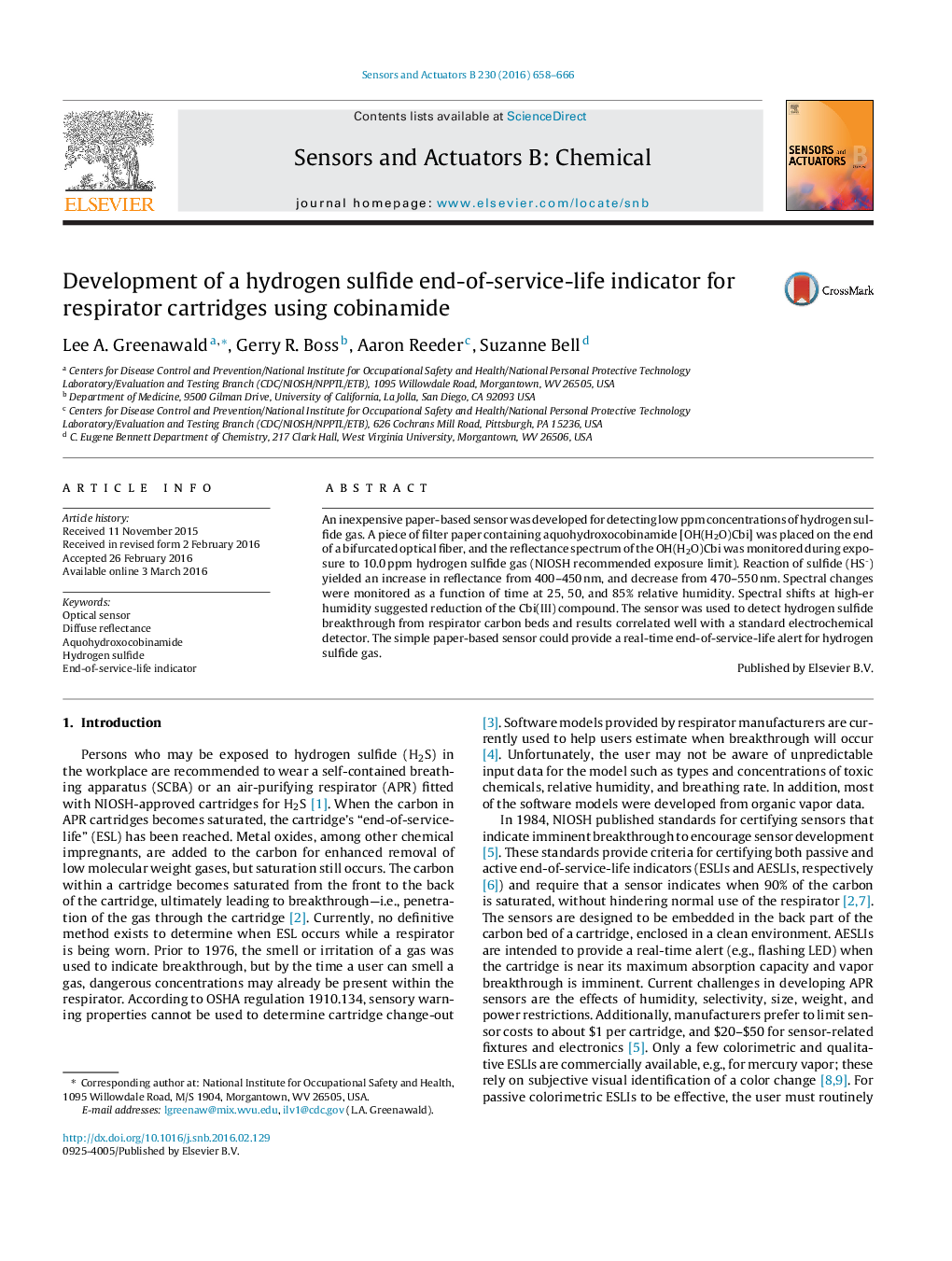| کد مقاله | کد نشریه | سال انتشار | مقاله انگلیسی | نسخه تمام متن |
|---|---|---|---|---|
| 741358 | 1462061 | 2016 | 9 صفحه PDF | دانلود رایگان |
• Aquohydroxocobinamide fixed on a paper substrate rapidly binds gaseous H2S.
• Paper substrate is positioned at end of a bifurcated fiber optic in a diffuse reflectance configuration.
• Spectral shifts of aquohydroxocobinamide is monitored as a function of 10.0 ppm H2S exposure time, relative humidity, and breakthrough from respirator cartridges.
• Increased relative humidity suggests reduction of the aquohydroxocobinamide compound to 2+ oxidation state.
• Detection of low concentrations of H2S upon cartridge breakthrough correlated with an electrochemical detector, suggesting proof-of-concept as an inexpensive end-of-service-life indicator.
An inexpensive paper-based sensor was developed for detecting low ppm concentrations of hydrogen sulfide gas. A piece of filter paper containing aquohydroxocobinamide [OH(H2O)Cbi] was placed on the end of a bifurcated optical fiber, and the reflectance spectrum of the OH(H2O)Cbi was monitored during exposure to 10.0 ppm hydrogen sulfide gas (NIOSH recommended exposure limit). Reaction of sulfide (HS-) yielded an increase in reflectance from 400–450 nm, and decrease from 470–550 nm. Spectral changes were monitored as a function of time at 25, 50, and 85% relative humidity. Spectral shifts at high-er humidity suggested reduction of the Cbi(III) compound. The sensor was used to detect hydrogen sulfide breakthrough from respirator carbon beds and results correlated well with a standard electrochemical detector. The simple paper-based sensor could provide a real-time end-of-service-life alert for hydrogen sulfide gas.
Journal: Sensors and Actuators B: Chemical - Volume 230, July 2016, Pages 658–666
